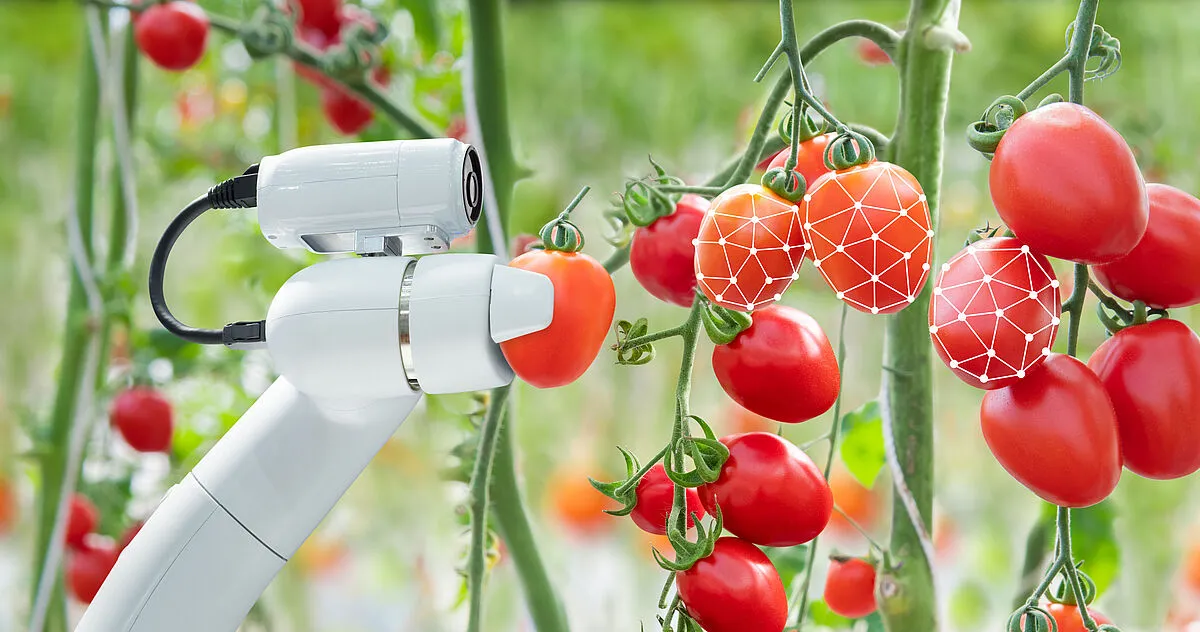The cultivation of fruit trees, whether in a small domestic garden or a large commercial orchard, requires dedication, knowledge, and an appreciation for the subtle interplay between soil, weather, and plant physiology. These days, advanced tools make it increasingly possible to take a scientific, data-driven approach to orchard management. By incorporating innovative technologies, gardeners can precisely track and respond to their fruit trees’ ever-changing needs. From soil sensors and irrigation systems to weather-monitoring apps and disease-detection software, the modern gardener now has an entire suite of smart tools at their disposal to ensure consistent yields and healthy crops. This shift toward precision horticulture has opened new possibilities for professional growers and enthusiasts alike.
A nursery specialist at https://www.fruit-trees.com/, who has decades of experience advising home gardeners and commercial orchard managers, offers this perspective: “One of the most important considerations when caring for fruit trees is recognising that no two growing seasons are the same. As soon as a tree suffers from inadequate watering or an undetected disease, the quality of the fruit can be affected for months to come. Precision tools are changing the entire landscape of fruit tree management, allowing for quick responses to problems, accurate fertiliser application, and healthier yields overall.”
With that expert advice in mind, we begin to explore the role that technology can play in a successful orchard. In the sections that follow, we will discuss how various smart tools work, what to look out for when adopting new gadgets, and how gardeners in the UK can integrate these solutions into their day-to-day routines. Although the prospect of “smart” devices might seem daunting at first, their value becomes evident as soon as a gardener realises the extent to which careful measurement and real-time monitoring can have a direct impact on fruit tree performance.
A New Era of Precision Horticulture
Until relatively recently, the concept of precision horticulture—using data and digital tools to inform growing practices—was largely the preserve of commercial farms. Technology was expensive, data was cumbersome to analyse, and domestic gardeners often found it simpler to rely on traditional observation and manual labour. However, over the past decade, the cost of sensors has fallen, smartphones and tablets have become ubiquitous, and user-friendly apps have proliferated. These shifts mean that even small-scale orchard enthusiasts can implement some form of precision technology.
Perhaps more importantly, the growing emphasis on efficiency, sustainability, and resource management has fuelled interest in data-driven orchard care. A healthy, high-yield fruit tree is the result of an optimal balance between resources such as water, nutrients, and sunlight. By employing smart tools that collect data about local weather conditions, soil composition, pest activity, and more, a gardener gains the power to make informed decisions on spraying, pruning, and fertilising schedules. When you buy fruit trees with the intention of optimising yield in the British climate—famous for its unpredictable weather patterns—this degree of precision can make all the difference.
Yet, precision horticulture is not merely about using the latest gizmo. It involves developing a holistic approach to fruit tree care, in which data from multiple tools is integrated into a coherent plan. A soil moisture sensor alone can be helpful, but its insights become far more powerful when paired with local weather forecasts and a historical record of watering schedules. The true value of these technologies emerges when data is used to create a clear, adaptable roadmap for orchard management, one that can be fine-tuned over time as more information is gathered.
The Importance of Soil and Water Management
In the quest to grow healthy fruit trees, it is essential to remember that a tree’s vigour is deeply rooted—literally—in the condition of the soil. Traditional techniques for assessing soil, such as visual inspection or manual testing with a pH kit, still hold value. However, modern sensors can provide a more in-depth view of what is happening beneath the surface. These devices can measure moisture, temperature, and pH levels in real-time, sending data directly to a smartphone or computer. When dryness is detected, an automatic alert can prompt the gardener to water immediately, thereby preventing undue stress on the tree’s root system.
The value of such soil-monitoring technology becomes apparent in climates like that of the United Kingdom, where rainfall can be erratic—downpours can saturate the soil for days, followed by weeks of relatively dry weather. Overwatering can lead to problems such as root rot and nutrient leaching, while chronic underwatering will cause slower growth and reduced fruit production. With the assistance of smart soil sensors, a gardener can ascertain precisely how much moisture is available to the root zone and adjust irrigation schedules accordingly. This eliminates guesswork and minimises the risk of applying too much or too little water.
Furthermore, soil sensors can measure temperature, giving a clearer picture of seasonal changes that signal when it is time for dormant pruning, or when the fruit tree will begin to break bud in spring. Incorporating these sensor readings into a record-keeping system can help in planning tasks such as mulching, feeding, and preparing for cold snaps. Over time, this data-driven approach helps produce stronger trees that are better able to cope with environmental stresses.
Real-Time Tree Health Monitoring
In addition to keeping tabs on soil, many modern tools have emerged that focus specifically on monitoring tree health. For instance, infrared-based sensors can measure a plant’s temperature, providing clues about water stress or disease before visible symptoms appear. Similarly, smartphone apps can use image recognition to identify common pests and diseases, providing advice on treatment before an infestation becomes widespread. Other technologies employ drones to scan large orchards, capturing multispectral images that can reveal nutrient deficiencies or fungal infections.
For the average British gardener with only a handful of fruit trees, drones might sound like an overly advanced option. However, smaller-scale devices are now available that use similar imaging techniques to detect early signs of stress. This is particularly valuable for orchardists who want to intervene as quickly as possible when problems arise. Catching an aphid infestation early, for example, might mean deploying a safe, organic treatment before populations boom, reducing the need for harsher chemicals later.
By leveraging such technologies, fruit tree care becomes more proactive. Instead of waiting to notice leaves curling or fruit dropping prematurely, the gardener can track real-time indicators of the plant’s health. This kind of early intervention can help maintain yield and fruit quality, which is all the more reason to invest in advanced monitoring devices. When you buy fruit trees and plan to nurture them for years, preserving long-term health becomes paramount, and real-time monitoring can significantly enhance your response.
Smart Irrigation Systems
A significant component of precision horticulture revolves around water management. While soil sensors can indicate how much moisture is in the ground, the next logical step is to incorporate an automated or semi-automated irrigation system that responds to this information. In many cases, smart irrigation systems include timers that can be programmed via smartphone apps, allowing the gardener to set a watering schedule that adjusts automatically based on sensor data or weather forecasts.
Consider the scenario: a gardener in the south of England notices from sensor readings that the soil beneath newly planted apple trees remains consistently moist due to heavier rainfall in early summer. The gardener can then adjust the irrigation system’s frequency to avoid waterlogging the roots. Conversely, during a prolonged dry spell in late summer, the same sensors might signal that the soil is approaching a wilting threshold. The system can trigger additional watering sessions, ensuring that moisture levels remain optimal and preventing the stress that often leads to smaller or misshapen fruit.
Such systems are not just about convenience. Minimising water wastage is critical for sustainable gardening, especially in areas prone to water restrictions. Smart irrigation helps achieve this goal by targeting water application precisely where it is needed, reducing runoff and evaporation. This can keep monthly water bills in check, while also promoting better environmental stewardship—a concern increasingly shared by British consumers and growers alike.
Weather Forecasting Tools and Microclimate Considerations
The British Isles are well known for their variable and often unpredictable weather. In the realm of fruit tree care, sudden temperature shifts can be problematic, risking frost damage to blossom in spring or heat stress in midsummer. Traditional weather forecasts offer a broad overview, but local conditions can differ significantly, especially in areas with varied topography or urban microclimates.
Thankfully, modern technology allows growers to set up small weather stations in their gardens or orchards. These stations measure variables such as temperature, humidity, rainfall, and wind speed. The data is then transmitted to an app or desktop interface, enabling the gardener to track real-time conditions. When a cold snap is predicted, for example, the system can send an alert prompting the gardener to protect vulnerable blossoms or buds with horticultural fleece. In cases of scorching summer temperatures, a timely message can remind the orchardist to increase watering or add additional mulch around the tree base.
Beyond immediate alerts, historical weather data collected over time helps build a detailed picture of a site’s unique microclimate. By correlating fluctuations in yield or pest incidence with weather patterns, a gardener can make targeted adjustments. If a particular fruit tree variety struggles in a consistently cooler pocket of the garden, an alternative variety might fare better. Weather data can thus influence decisions on which cultivars to plant and where to position them, ensuring that when people buy fruit trees, they choose the right ones for their local conditions.
Integrating Data Analysis and Orchard Management Software
One of the remarkable developments in gardening technology is the rise of integrated orchard management software. These platforms combine data from multiple sources—soil sensors, weather stations, drone imaging, and even manual observations—to produce a coherent dashboard of orchard health. At first glance, such software may seem intended only for commercial growers managing large tracts of land. However, scaled-down versions cater to smaller gardens, providing valuable insights into each tree’s needs and performance over time.
These systems typically offer features such as scheduling, which allows you to set up reminders for tasks like fertilising, pruning, or checking for pests. They may also provide data analytics, helping to pinpoint trends and anomalies. Imagine a scenario where, year after year, a particular plum tree shows an increased incidence of brown rot following extended periods of humidity. By reviewing historical data, you can confirm the pattern and plan more targeted interventions, such as preventive sprays or improved air circulation measures. The result is a more efficient, informed approach that reduces trial and error.
Additionally, software that encourages data sharing can be valuable in a broader community context. Some platforms permit the exchange of information between local gardeners, enabling you to see which pests are appearing in your area, what solutions others have found effective, and how local weather phenomena are shaping orchard outcomes. Such collaboration underscores the growing importance of technology in fostering networks of knowledge, uniting both novices and experts in the pursuit of healthier, more productive fruit trees.
Practical Steps for Adopting Smart Tools
While the advantages of technology-driven orchard care are considerable, many gardeners wonder how to begin. The first step is identifying your particular needs. If water management is a recurring challenge in your area, then investing in reliable soil sensors and a smart irrigation system may be the best starting point. If pest and disease outbreaks have plagued your orchard in the past, a monitoring system with image recognition features can prove invaluable.
It is also crucial to consider compatibility among devices. Some soil sensors and weather stations only communicate with specific brands of software, so ensure that the products you purchase can be integrated easily. Looking ahead, you might want to expand your technology suite, so a modular, scalable approach is often the most practical. This way, you can begin with a single sensor and add components over time, without locking yourself into incompatible systems that fail to share data effectively.
Cost is, of course, a consideration. While a fully featured orchard management platform and drone imaging system may be out of reach for the average gardener, simpler solutions have become surprisingly affordable. Basic soil and weather sensors can be purchased for modest sums, and many apps offer free or low-cost versions with fewer advanced features. For those willing to spend more, high-end packages can deliver granular insights that justify the investment, especially for large or specialised collections of fruit trees.
Expert Perspectives on Varieties and Tools
Nurseries across the UK have embraced this new era of precision gardening, recognising that fruit trees grown with the assistance of data-driven methods often produce better results. When you buy fruit trees, it is important to consider not only the variety—whether you are drawn to a classic British dessert apple or a modern plum hybrid—but also the tools that will help you care for it once planted. An informed purchase goes beyond mere aesthetics or taste; it involves taking into account rootstock compatibility, local soil conditions, and likely challenges with pests or diseases.
When speaking to horticultural experts, a recurring piece of advice is to use technology as a supplement to, rather than a replacement for, hands-on observation. Despite the benefits of soil and weather sensors, there is no substitute for physically inspecting a tree’s leaves, branches, and bark. Digital data should reinforce a gardener’s knowledge and instincts. The most successful orchardists are typically those who combine empirical measurements with the sensory input gleaned from regular walk-throughs, ensuring that technology augments—rather than displaces—traditional horticultural wisdom.
Sustainable Gardening Through Technology
Another significant aspect of smart orchard management is its potential contribution to sustainability. Cutting-edge tools are helping growers reduce chemical usage and optimise resource allocation, benefiting not just fruit trees but the broader environment. For instance, integrated pest management (IPM) systems can use sensor data to predict outbreaks and identify pest hot spots, allowing for carefully targeted treatments that minimise ecological disruption. The result is often a healthier orchard ecosystem with robust populations of beneficial insects such as pollinators and natural predators.
In the context of climate change, these technologies become all the more vital. As weather patterns become less predictable, real-time data becomes indispensable for adjusting fertilisation and watering, as well as anticipating stress factors like heatwaves or unseasonable frosts. By staying attuned to these shifts, gardeners can maintain resilient fruit tree populations capable of bearing crops despite evolving conditions. This resilience is crucial not just for commercial viability, but also for the long-term enjoyment of homegrown fruit—a pleasure that resonates with many British families seeking healthier and more sustainable ways to source their produce.
Challenges and Limitations
While enthusiasm for smart orchard tools is understandable, they do come with a set of challenges that gardeners should keep in mind. One potential pitfall is over-reliance on technology. If sensors fail or software malfunctions, a grower who has come to depend entirely on these devices can be caught unprepared. Regular calibration of sensors, data backup, and the cultivation of hands-on horticultural know-how are essential to avoid unwelcome surprises.
Connectivity can also be an issue, especially in remote or rural areas where Wi-Fi or mobile data signals are weak. Many devices rely on stable internet connections to function optimally, whether to transmit data to the cloud or to download software updates. Gardeners operating in areas with patchy coverage may need to invest in offline-compatible systems or ensure that stable connectivity can be maintained through boosters or alternative internet solutions.
Another consideration is the learning curve associated with new technologies. While many products are designed to be intuitive, a degree of digital fluency is still necessary to interpret graphs, set up automation, and resolve technical glitches. For some gardeners, the prospect of troubleshooting an app may detract from the tranquil appeal of tending to plants. However, many find that after an initial adjustment period, the benefits of consistent, data-informed care far outweigh any temporary inconvenience.
Future Developments in Orchard Technology
Looking ahead, it seems likely that orchard technology will continue to evolve rapidly. Machine learning and artificial intelligence are making it possible for software to predict problems with greater accuracy, drawing on vast libraries of images and datasets from around the world. This may lead to ever more sophisticated pest and disease detection methods, possibly integrated into camera-equipped robots that can traverse orchards and undertake targeted interventions.
Additionally, gene-editing techniques might pair with precision horticulture to refine fruit tree varieties suited to specific microclimates. For instance, researchers could develop apple cultivars that thrive in cooler coastal regions or produce higher yields in areas prone to summer droughts. Combined with real-time data on environmental conditions, these new varieties would form part of a seamlessly integrated approach to orchard management, maximising resilience and productivity.
For the home gardener, the trick will be staying informed without being overwhelmed. As new tools come to market, it is advisable to adopt them gradually and evaluate their practical value. A well-curated set of devices, implemented in conjunction with established horticultural principles, remains the surest path toward successful fruit tree cultivation.
Balancing Tradition and Innovation
In a country like Britain, with its long and storied tradition of orchard culture, the march of technology can spark nostalgic reflections on simpler times. However, even the most ardent traditionalists can find benefits in the judicious use of modern devices. Whether it is tracking precisely when a beloved heritage apple variety needs watering or discovering that a newly introduced pest has arrived in the region, data has the power to elevate and preserve these traditions. Smart horticulture need not replace time-honoured techniques; rather, it can enhance and protect the heritage of British fruit growing, ensuring that prized cultivars continue to flourish for generations to come.
Moreover, when you buy fruit trees, there is an inherent optimism about the future. Planting a young sapling symbolizes the intent to nurture and harvest for years, if not decades. Investing in the right blend of traditional care and modern intelligence is a step that aligns with this forward-thinking mindset. Gardeners who have taken the plunge into smart orchard management often speak of renewed confidence and a deeper understanding of their fruit trees’ needs.
Conclusion: Embracing a Smarter Future for Fruit Trees
Smart tools for precision fruit tree care represent a natural progression of gardening practices, merging the time-tested wisdom of orchardists with the latest breakthroughs in technology. British gardeners, whether tending a small suburban plot or overseeing a more expansive orchard, can now employ devices and software that enhance every aspect of cultivation. From soil sensors that alert you to moisture imbalances, to aerial imaging that detects early signs of disease, these solutions offer an unprecedented level of insight into tree health.
Initially, adopting such technologies can feel like a significant leap. Questions arise about cost, complexity, and ongoing maintenance. Yet the experiences of those who have embraced a data-driven approach point to improved consistency in fruit yield, healthier trees, and greater sustainability. By focusing on the orchard as a system—integrating soil health, weather data, pest and disease management, and pruning schedules—a gardener can unlock higher levels of precision and success.
In an era where environmental stewardship is becoming ever more critical, efficient resource usage and targeted interventions are essential. The decision to buy fruit trees thus becomes one component of a larger strategic approach, supported by a suite of technologically advanced tools that mitigate risks and enhance results. As our specialist hinted at the outset, the right technology allows for timely, informed decisions that protect the long-term vitality of fruit trees. Balancing tradition with innovation may well be the defining characteristic of British orcharding in the twenty-first century, and the widespread availability of smart tools ensures that even the smallest garden can participate in this exciting transformation.
With these insights in mind, consider exploring some of the emerging devices and software platforms designed for orchard management. Whether you begin with something as straightforward as a digital soil thermometer or dive straight into a fully integrated monitoring system, the potential benefits are evident. Smart technology can foster a deeper, more interactive relationship with your fruit trees, turning routine chores into opportunities for learning and discovery. In the end, the goal remains the same as it always has been: to grow thriving, productive fruit trees that bring pleasure to the gardener and nourish both body and spirit.




